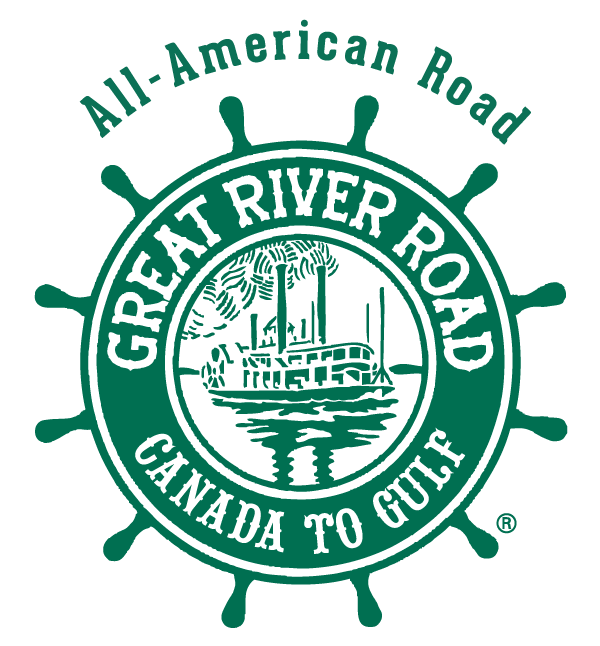14 Days. 1,400 Miles. The Trip of A Lifetime.
Days 1-2: Minneapolis and St. Paul
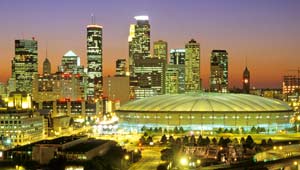 Welcome to the Twin Cities! Located along the Mississippi River in Minnesota, you’ll spend two days experiencing museums, the Mississippi Headwaters, architecture and more.
Welcome to the Twin Cities! Located along the Mississippi River in Minnesota, you’ll spend two days experiencing museums, the Mississippi Headwaters, architecture and more.
If you’re interested in seeing the headwaters of the Mississippi, plan to take a day trip to Lake Itasca State Park. Explore towering pines, stay in a cabin or take a hike through the 2,000-acre Wilderness Sanctuary. If you’re in the right season, consider camping at the park. In Minneapolis, visit the Science Museum of Minnesota, including their Mississippi River Gallery & Exhibit and the “Mysteries of the Great Lakes” film. See a show or take a tour at the famous Guthrie Theater. Built into the ruins of what was once the world’s largest flour mill, the Mill City Museum is a fantastic feat of architecture well worth seeing. In the mood for a bit of shopping? Check out the Mall of America.
Day 3: Minneapolis to La Crosse—148 Miles
Travel down some of the most beautiful sections of the Great River Road in Minnesota and Wisconsin. Highlights along this stretch include tiny Red Wing, MN, a quaint river town famous for the shoes and pottery that bear its name. Wabasha, MN is home to the National Eagle Center. The Center features live eagles—it’s a truly unforgettable experience. Alma, WI has one of the best views of the river bluffs anywhere at Buena Vista Park. While bird watching is a favorite activity all along the river, Alma is also an ideal bird watching destination. At La Crosse, plan to take an evening river cruise and visit Granddad’s Bluff.
Day 4: La Crosse to Galena—131 Miles
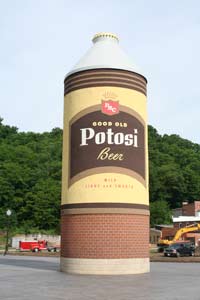 Continuing your journey in Wisconsin, explore the tiny river communities of Stoddard, Genoa and Ferryville. Have lunch in Prairie Du Chien, the oldest community on the Upper Mississippi River. After lunch, consider exploring an area winery or orchard, or stop in at the National Brewery Museum in Potosi, WI. In Potosi, don’t forget to get your picture taken with the world’s largest beer bottle! If you make it to Dubuque with time to spare, don’t miss the National Mississippi River Museum & Aquarium, a newly built attraction great for kids or science-minded parents.
Continuing your journey in Wisconsin, explore the tiny river communities of Stoddard, Genoa and Ferryville. Have lunch in Prairie Du Chien, the oldest community on the Upper Mississippi River. After lunch, consider exploring an area winery or orchard, or stop in at the National Brewery Museum in Potosi, WI. In Potosi, don’t forget to get your picture taken with the world’s largest beer bottle! If you make it to Dubuque with time to spare, don’t miss the National Mississippi River Museum & Aquarium, a newly built attraction great for kids or science-minded parents.
Spend the evening in quaint, historic Galena, IL, a B&B destination with fantastic antiquing, a wealth of recreational opportunities and sunset balloon rides every night! Galena was a bustling hub for steamboats and lead mining during the 1800s. Take a tour of the area with Galena Trolley Tours, including the Ulysses S. Grant Home.
Day 5: Galena to Davenport—93 miles
Spend your morning in Galena: enjoy a lovely breakfast at a Main Street restaurant, then take a quick hike through town to Grant Park. Next, visit Moline, the hometown of farming hero John Deere. Learn how he changed the world’s agricultural landscape at the John Deere Pavilion and John Deere Collectors Center. Enjoy a dinner and dance cruise on the Mississippi River aboard the 800-passenger Celebration Belle. Afterwards, roll the dice at Jumer’s Casino Rock Island, a three-deck riverboat right on the Mississippi.
Day 6: Davenport to St. Louis—300 miles
Begin the day in Nauvoo, a river town that’s rich in Mormon history. Visit the Joseph Smith Historic Site, which traces the Latter-day Saints movement in 1840s Nauvoo. Join a guided walk or take a horse-drawn carriage ride through the site to see such Mormon landmarks as the Brigham Young Home and the Smith Homestead. Have lunch at nearby Thyme & Seasons Restaurant. Afterwards, travel the scenic Great River Road to Quincy, where you can tour the Governor John Wood Mansion, considered one of the finest existing examples of Greek Revival architecture in the Midwest.
In Alton, see the National Great Rivers Museum, located on the Meeting of the Great Rivers National Scenic Byway. The museum illustrates the history and important transportation role of the Mississippi through interactive exhibits and displays. The museum is located at the Melvin Price Locks & Dam, which is open to the public for guided tours. Consider dinner at Castelli’s Moonlight Restaurant, an Alton dining tradition for more than 60 years. If you’ve got the time, make tracks to the Lewis & Clark Interpretive Center in nearby Hartford. See a replica of Camp River Dubois and a fullscale model of the keelboat that the explorers used to set out on their journey from Illinois.
Day 7: St. Louis
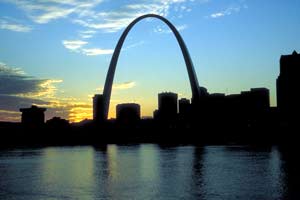 Welcome to the Gateway to the West! Spend your day in St. Louis exploring. Ride to the top of the Gateway Arch, towering 630 feet over the Mississippi River. Visit free attractions like the Art Museum, Zoo, Science Center, Anheuser-Busch Brewery, Grant’s Farm and the Missouri History Museum. Catch a game with one of St. Louis’ professional teams: MLB’s Cardinals, NFL’s Rams or the NHL’s Blues. Looking to get close to the river? Take a one-hour sightseeing cruise with Gateway Arch Riverboats.
Welcome to the Gateway to the West! Spend your day in St. Louis exploring. Ride to the top of the Gateway Arch, towering 630 feet over the Mississippi River. Visit free attractions like the Art Museum, Zoo, Science Center, Anheuser-Busch Brewery, Grant’s Farm and the Missouri History Museum. Catch a game with one of St. Louis’ professional teams: MLB’s Cardinals, NFL’s Rams or the NHL’s Blues. Looking to get close to the river? Take a one-hour sightseeing cruise with Gateway Arch Riverboats.
Day 8: St. Louis to Memphis—286 miles
Make your first stop of the day at Sainte Genevieve, MO, a historic French colonial village. Founded around 1735 by French immigrants, Sainte Genevieve is the oldest organized European settlement west of the Mississippi River. Tour colonial homes, stop in at the welcome center and cruise Ste. Genevieve’s Route du Vin.
Near Cape Girardeau, take a detour to the Trail of Tears State Park, a memorial to the Cherokee Native Americans that died on the Cherokee Trail of Tears. Stop in at the interpretive center to learn more about the park’s history and wildlife, go fishing or take a peaceful hike. Enjoy lunch in town: Broussard’s Cajun Cuisine and Bella Italia are two of our favorites.
Plan your next stop at Wickcliffe, KY, where you’ll learn more about prehistoric Native American mound builders at the site of a Mississippian village. Occupied from AD 1100 to 1350, the settlement was once a complex group of houses and earthen mounds. See excavated features of the mounds, displays of Mississippian pottery, stone tools, bone and shell implements, architecture and more.
Day 9: Memphis
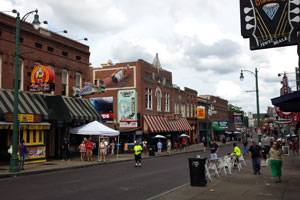 Welcome to the birthplace of Rock ‘n’ Roll, and the home of some of the greatest food, music and entertainment in the U.S. Plan your day around the music of the area: visit Elvis’ Graceland, Sun Studio, the Stax Museum of American Soul Music and the Memphis Rock ‘n’ Soul Museum. Ready to see some living artists hard at work? Make your way to Beale Street and listen to live performers.
Welcome to the birthplace of Rock ‘n’ Roll, and the home of some of the greatest food, music and entertainment in the U.S. Plan your day around the music of the area: visit Elvis’ Graceland, Sun Studio, the Stax Museum of American Soul Music and the Memphis Rock ‘n’ Soul Museum. Ready to see some living artists hard at work? Make your way to Beale Street and listen to live performers.
Getting around in town is easy—take the trolley for the Riverfront Loop route and this 2.5-mile ride will give you the perfect view of Downtown Memphis and the Mississippi River. Plan to stop off at the National Civil Rights Museum, which pays homage to Dr. Martin Luther King, Jr. and the others who fought for civil rights throughout history. If you’re into food (and who isn’t), Memphis may be the highlight of your trip. Barbecue reigns supreme here: Charles Vergos’ Rendezvous is famous for slow-roasted ribs. Arcade Restaurant is Memphis’ Oldest Café (since 1919), but still one of its best. Arcade was one of Elvis’ favorite restaurants.
Day 10: Memphis to Vicksburg—221 Miles
Driving south from Memphis, plan to stop in Helena, AR, home of the Delta Cultural Center. This museum includes educational programs, annual exhibits and guided tours that explore the Delta. The museum highlights the Blues Music that makes this region famous.
Next, cross the river and pull into Clarksdale, MS, one-time home of famous bluesman Muddy Waters. Waters lived in Clarksdale from 1915 to 1943 while he worked on the large Stovall cotton plantation. Clarksdale is also home to the Delta Blues Museum, and the legendary “Crossroads,” where Robert Johnson supposedly sold his soul to the devil in exchange for mastery of the guitar.
Make one more stop at Indianola to visit the B.B. King Museum and Delta Interpretive Center. You’ll learn the story of the Blues through the life of B.B. King, follow King’s career, and trace the development of the Blues from its southern origins to its spread up the Mississippi River to Memphis, Chicago, and eventually to the entire U.S. and the world.
Before you make your way to Vicksburg for the night, you might stop off at one of the south’s grand plantation homes. Greenville, MS has three of the area’s best: Belmont, Mount Holly and Linden.
Day 11: Vicksburg to Baton Rouge—161 Miles
Begin your day in historic Vicksburg. If you’re a history buff, you know that Vicksburg is the site of one of the great battles of the Civil War, where General Ulysses S. Grant laid siege to the city and forced the Confederate surrender after more than forty days. Combined with Gettysburg, the Battle of Vicksburg is considered one of the turning points of the war.
Vicksburg’s Civil War history is best experienced at the Vicksburg National Military Park. The scene of the battle, the Park includes a free movie at the visitor center, a driving tour and an exhibit featuring the U.S.S. Cairo, a union ironclad gunboat sunk during the Civil War.
Vicksburg also offers the Biedenharn Cocoa-Cola Museum, where the first Coca-Cola bottle was produced in 1894. Other attractions include dockside casinos, riverboat tours and cultural exhibitions.
Stop for lunch at one of the oldest buildings in Natchez at King’s Tavern, or get your BBQ fix at Pig Out. Natchez has a beautiful downtown, and was originally founded by French colonists in 1716. If you’re not set on a place for the night, consider staying at the Monmouth Plantation, which was converted from an antebellum mansion into a gorgeous inn.
Day 12: Baton Rouge to New Orleans—81 miles
Known as the Capital Area, Baton Rouge is the second largest city in Louisiana. Home to the campus of LSU and Southern Universities, the city is also known for the Louisiana Museum of Natural History, Magnolia Mound Plantation House, the USS Kidd (a Fletcher class destroyer), and Arsenal Park overlooking Capitol Lake.
Ready to make the last leg of your journey? On your way to New Orleans, think about stopping off at Plaquemine Lock State Historic Site. Built in 1909, the lock was an important part of the intra-coastal canal system until 1961. Today you can visit the lockmaster’s house, explore the inner workings of the lock, and view river traffic.
Nearby, check out the Port Hudson State Historic Site, a 909-acre Civil War battlefield. Your drive into New Orleans will take you through the Maurepas Swamp, an important wildlife area where you might catch a glimpse of alligators and other wildlife.
Days 13-14: New Orleans
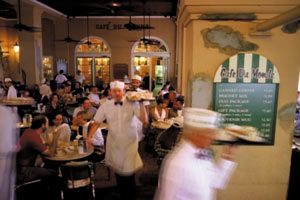 Welcome to The Big Easy! One of the south’s most famous cities, New Orleans is a cultural paradise. Enjoy French Creole architecture, take a dinner cruise aboard the steamboat Natchez, go fishing in the gulf or just peruse one of the cities famous parishes. Some of our favorite spots for food include Café Du Monde, a 24-hour café established in 1862, great for breakfast. Brennan’s, Mother’s, and the Acme Oyster House are also famous in downtown.
Welcome to The Big Easy! One of the south’s most famous cities, New Orleans is a cultural paradise. Enjoy French Creole architecture, take a dinner cruise aboard the steamboat Natchez, go fishing in the gulf or just peruse one of the cities famous parishes. Some of our favorite spots for food include Café Du Monde, a 24-hour café established in 1862, great for breakfast. Brennan’s, Mother’s, and the Acme Oyster House are also famous in downtown.
Top attractions while you visit include the National World War II Museum. Exhibits include a PT boat, and materials on D-Day beaches in the Atlantic and Pacific theaters. Coming in Spring 2012, the museum will add a new pavilion including land, sea and air vehicles and artifacts from the Great War.
Music is a huge part of life in New Orleans. Preservation Hall is an historic and inexpensive jazz venue that serves up first-rate music. But if you’re after music, just start walking! Plenty of the nation’s best street performers call New Orleans home.
Other attractions include the St. Louis Cathedral, a major landmark in the French Quarter, the Old New Orleans Rum Distillery that, offers tours, and the Garden District, an area of the city featuring numerous historic homes.





